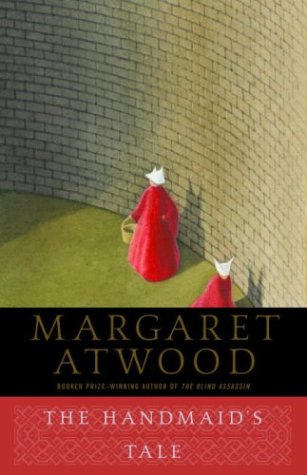Introduction
Sexual harassment is an issue that has been addressed in literature in various ways. The Handmaid’s Tale by Margaret Atwood does not contain many scenes that explicitly portray instances of harassment. Instead, the author describes a setting where the notion of harassment is embedded in society’s structure. The following paper analyzes the motifs and themes contributing to the described effect in order to determine the ways in which the system supports harassment at the state level.
Analysis
The first motif consistent with this theme is the depiction of females as subjects of exploitation. The chief cause of such inequality is the ability of women to bear children. Essentially, women are discriminated based on the fact that some of their physiological properties are unique to them. However, in an unintuitive way, instead of being viewed as unique, the women in the novel are considered inferior and treated respectively. In the world of Gilead, a combination of environmental factors has led to a decline in fertility among the population, which in theory should increase appreciation of childbearing as a component crucial for the survival of humankind. Instead, women are required to participate in a mandatory program aimed at securing the future of society.
It should be noted that men and women are given different sets of responsibilities and expectations in the program. Essentially, a male who is unable to conceive a child with his wife is assigned a handmaid who can do this in her stead. This scenario is based on a fundamental assumption that infertility is largely a woman’s fault and that it is not in her right to decide whether she should contribute to the “common cause.” In addition, it is apparent that males are in control of the situation since in the novel they occupy all of the important positions in society whereas women either serve them or offer their allegiance by becoming aunts in order to assist the program (Atwood, 1986). In accordance with the state policy, the social institution of marriage needs to be tightly regulated in order to improve the declining birth rate.

However, it is evident that such a system regulates only the choices made by women whereas men enjoy an almost totalitarian control over the situation. In a certain sense, women in Gilead are viewed as a means of achieving goals set by the governing body. Thus, it is possible to characterize the situation described in the novel as harassment on a statewide level. Experts in the field point out that a culture that promotes females as subjects whose primary purpose is giving birth to children creates a distorted image of a society that puts males in dominant social positions (Galdi, Maass, & Cadinu, 2014). By extension, many cases of harassment today can be attributed to this effect (Gray, 2017; Nielsen, Glasø, & Einarsen, 2017). In Atwood’s book, discrimination reaches an absurd level by becoming a cornerstone of society. As a result, the entire culture encourages discriminative behavior and promotes an exertion of control over women.
At this point, it is also important to acknowledge the role of women’s rights in relation to the theme of harassment. As a part of the state agenda, women who work as handmaids are forbidden to vote, choose their occupations and read. The latter is especially heavily enforced since a game of Scrabble also falls under this restriction despite its evident uselessness as a source of information (Atwood, 1986). However, from a broader perspective, this restriction can be considered a way of maintaining control over the segment of the population. Citizens that cannot read or vote will be unable to engage in the political proceedings, and those who do not have employment options will be more dependent on their patrons, who are represented by males in the book. This setup bears several intersection points with harassment observed in the real world since it can be traced to the perception of control over the situation and a sense of superiority held by males (Stewart & Asthana, 2016).
The success of female rights activists of the late twentieth century has created a situation where the proportion of women in the workplace has increased dramatically on a global scale (Kokemuller, 2013). According to the researchers, this change was considered a threat by some men who intuitively perceive women as a competition while at the same time viewing them as unfit for professional activities on equal terms (“Causes,” n.d.). In this light, the attempts to limit social and economic independence of women, coupled with a deliberate informational deprivation and lack of basic political power described above create an environment that encourages discrimination and makes it easier to occur. In other words, the world depicted in a book not merely introduces the possibility of harassment as a social anomaly but essentially encourages it.
The theme of power deprivation is can also be observed in a physical domain since handmaids are essentially confined to their rooms. They are not allowed to participate in any of significant social activities, and their social interactions are limited to occasional shopping and the participation in the Ceremony – a formalized act of conception during which a maid impartially engages in a sexual act with her Commandeer in the presence of his wife. Understandably, such deprivation disrupts the capacity to resist and creates a perception of hopelessness and total submission. While it is tempting to view the situation described in the book as unrealistically totalitarian, it promptly identifies socially-induced helplessness as one of the factors responsible for the occurrence of harassment (Mainiero & Jones, 2013). The men who are certain that their victims will be unable to change the situation or in any way compromise their social status after inappropriate behavior on their part will be more likely to intimidate and harass them.
The procedure described above, known as the Ceremony, facilitates an important contribution to the culture. As was already mentioned, the procedure is formalized, starting with a Bible reading session followed by an intimidating sexual act. The commander’s wife is present during the act and is expected to hold the handmaid’s hand. The handmaids are instructed to behave as lifeless as possible since the entire process is meant to provide a solution to the alarming demographic issue. In a sense, handmaids are reduced to objects that provide the necessary physiological function.
This situation is reminiscent of a harassment scenario, with one notable difference: in the novel, women are harassed as a result of their objectification as child-bearers whereas, in the real world, they are more commonly objectified as objects of sexual desire (Heflick & Goldenberg, 2014). A prominent example of the latter is the trial of a teacher who was accused of raping an underage female student. In the process, the validity of an allegation was challenged by a judge who considered the behavior of the victim highly suggestive and inappropriate for her age (Mai-Duc, 2013). Such simplification is reminiscent of the approach chosen by the government of Gilead, where the default assumption is that the value of a woman is determined primarily by her capacity to contribute to the well-being of society.
The control exercised over handmaids is reinforced by the existence of incentives issued for compliance with the expectations. The most appropriate example is the successful pregnancy which entitles handmaids to a certain degree of freedom. However, upon closer inspection, it becomes evident that the nature of this freedom is highly dubious. In essence, it provides them with a basic set of human rights and delays their retirement which, in the world of Gilead, can be equated to a death sentence. In other words, social principles cement the allegiance of handmaids to their masters without giving them too much independence. It is reasonable to expect that in such a setting, it becomes much easier for men to engage in harassing behavior due to their victims’ vulnerability and dependence.

It is important to understand that the described scenario holds true for all females in society, regardless of their social or occupational status. For instance, Serena Joy, the wife of the protagonist’s commander, does not face the same restrictions of her daily activities. However, her rights exceed only those of handmaids, since she still has no means to influence the decisions made by men. On the other hand, she is given sufficient freedom within her household, which creates a false perception of power and enables her to oppress her husband’s handmaid. The same can be said about aunts – employees of re-education centers that indoctrinate the women with the state’s ideology and prepare them to fulfill what is considered their sole purpose. In a sense, this creates a self-sustaining system where the social hierarchy offers women of higher ranks to abuse those who are socially inferior to them, providing them with the necessary psychological relief and contributing to the oppressive culture.
Finally, it is necessary to identify the role of language in the creation of Gilead’s social environment. Certain approaches to naming the phenomena are consistent with hostile and discriminating culture dominant in the state. The most prominent example is the name system used by handmaids, where instead of their real names, they are assigned code phrases that essentially identify their master. The protagonist gets the name Offred, which can be interpreted as “the one belonging to Fred). Understandably, such an approach has an adverse effect on the identity and suppresses resistance. In many cases, the terms used to denote social status bear visible implications regarding the expected treatment of subjects, such as in the case of feminists who are referred t as unwomen, implying their inferiority to other humans (Atwood, 1986). On the other hand, males are referred to using their military ranks in order to emphasize their achievement. Since the setting described in the book is a result of a deliberate effort, it is apparent that the word choices were most likely intentionally aimed at creating the perception of inequity and promoting discriminative behavior.
Conclusion
As can be seen from the information above, the world depicted in Margaret Atwood’s book creates a culture that promotes discrimination and abuse of women. The seemingly noble cause of restoring the population by creating a new social class and issuing governmental control rests on the fundamentally flawed premise that women are to be blamed for the inability to become pregnant. This setup leads to the objectification of women and, reinforced by physical confinement, informational isolation, and propagation of ideology through government institutions and terminology, creates an environment where women are inherently susceptible to harassment. In other words, the book depicts an extreme case where harassment would be considered normal.
References
Atwood, M. (1986). The handmaid’s tale. New York, NY: Everyman’s Library Classics.
Causes of sexual harassment. (n.d.). Web.
Galdi, S., Maass, A., & Cadinu, M. (2014). Objectifying media: Their effect on gender role norms and sexual harassment of women. Psychology of Women Quarterly, 38(3), 398-413.
Gray, F. V. (2017). Men’s intrusion, women’s embodiment: A critical analysis of street harassment. New York, NY: Routledge.
Heflick, N. A., & Goldenberg, J. L. (2014). Seeing eye to the body: The literal objectification of women. Current Directions in Psychological Science, 23(3), 225-229.
Kokemuller, N. (2013).Male vs. female statistics in the workplace in America. Web.
Mai-Duc, C. (2013). The judge in rape case criticized for a light sentence, remarks about the victim.Los Angeles Times. Web.
Mainiero, L. A., & Jones, K. J. (2013). Workplace romance 2.0: Developing a communication ethics model to address potential sexual harassment from inappropriate social media contacts between coworkers. Journal of Business Ethics, 114(2), 367-379.
Nielsen, M. B., Glasø, L., & Einarsen, S. (2017). Exposure to workplace harassment and the Five Factor Model of personality: A meta-analysis. Personality and Individual Differences, 104, 195-206.
Stewart, H., & Asthana, A. (2016). Women urged to speak up to counter male-dominated EU debate.The Guardian. Web.